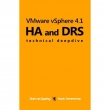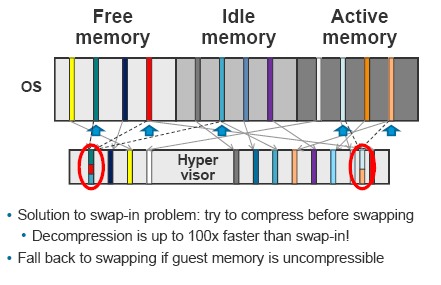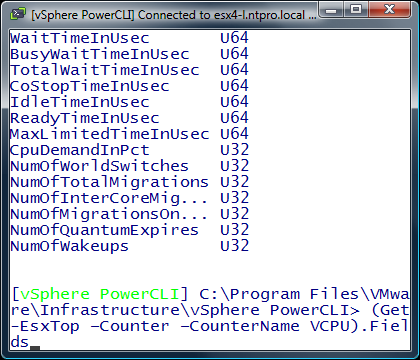My virtualization friend Remon Lam who works as a VMware Consultant in the Netherlands and is running VirtualClouds.info has recorded my complete VMUG 2010 session on video. Besides that he converted it and did an upload to vimeo last night. Kudos and many thanks go out to Remon. For the attendees who want to see it again because I was talking pretty fast or people that were not able to attend it’s available online, the full 45 minutes. If you want to run through the slides while I’m presenting, you can get your copy here. I hope you will enjoy it and don’t fall asleep. :-)
Sunday, December 12. 2010
VMware vSphere Advanced Troubleshooting by Eric Sloof – The Video
Saturday, December 11. 2010
Dutch VMUG Event 2010 - The Video
This year’s Dutch VMUG Event 2010 video contains a lot of awesome impressions I’ve captured during the day. I want to thank all the 750 attendees for visiting this great event. The video is a compilation of the start-up, some sessions I attended, the workshops, the food and drinks and at the end of the day all the lucky prize winners.
Here's the link to the Dutch VMUG Event 2010 Video for iPad users http://bit.ly/gHV0Ej
Friday, December 10. 2010
Technical Papers -VMware High Availability (HA): Deployment Best Practices
This paper describes best practices and guidance for properly deploying VMware HA in VMware vSphere 4.1. These include discussions on proper network and storage design, and recommendations on settings for host isolation response and admission control.
VMware vSphere Advanced Troubleshooting – The Slide Deck
This year’s Dutch VMUG event 2010 is massive! The number of attendees is over 750 and there are loads of great sessions and workshops. Right before lunch, I had the honour to present my session which deals with virtual machine advanced troubleshooting in a vSphere environment. When you are interested in the metrics you can find in esxtop and prepared to go beyond the point where you’re just looking at CPU ready times then this slide deck will give you a better insight. You can also get a grip on things like memory limits and reservation, storage bottlenecks and finding the reason for dropped network packets.
This presentation has cost me a lot of time to prepare but it was a joy to build it. I’ve been working on it for two months. Besides delivering training on a daily basis, I’ve spent every free minute on doing research, gathering screenshots and creating awesome graphics. Two valued virtualization colleagues have reviewed the presentation so I want to thank Rawlinson Rivera and Harold Schoofs for their great feedback. vSphere Advanced Troubleshooting has been presented during my VMware training courses for five times, so from this place many thanks to all my students for their great feedback in the past weeks. I’ve uploaded the presentation to SlideShare but you can also get a copy here: AdvancedTroubleshooting.pdf - 50 slides of awesomeness from start to end, I hope you enjoy it.
Tuesday, December 7. 2010
VCAP on vSphere 4 - Datacenter Design - Exam Registration Now Open
To help prepare for the exam, attend the new VMware vSphere design courses that cover topics from the VCAP4-DCD exam blueprint:
• VMware vSphere - Design Workshop
• DRBC Design – Disaster Recovery and Business Continuity Fundamentals
Prerequisite
You must be a VMware Certified Professional on vSphere 4 (VCP4) in order to take the advanced certification exam.
How to register
Candidates will need to obtain VMware authorization before registering with a Pearson VUE test center. Please complete the Registration Request to get authorized. You will need to know your VCP number.
Sign up to take the VCAP4-DCD exam
Monday, December 6. 2010
New Book - VMware vSphere 4.1 HA and DRS Technical Deepdive
 VMware vSphere 4.1 HA and DRS Technical Deepdive zooms in on two key components of every VMware based infrastructure and is by no means a "how to" guide. It covers the basic steps needed to create a VMware HA and DRS cluster, but even more important explains the concepts and mechanisms behind HA and DRS which will enable you to make well educated decisions. This book will take you in to the trenches of HA and DRS and will give you the tools to understand and implement e.g. HA admission control policies, DRS resource pools and host affinity rules. On top of that each section contains basic design principles that can be used for designing, implementing or improving VMware infrastructures.
VMware vSphere 4.1 HA and DRS Technical Deepdive zooms in on two key components of every VMware based infrastructure and is by no means a "how to" guide. It covers the basic steps needed to create a VMware HA and DRS cluster, but even more important explains the concepts and mechanisms behind HA and DRS which will enable you to make well educated decisions. This book will take you in to the trenches of HA and DRS and will give you the tools to understand and implement e.g. HA admission control policies, DRS resource pools and host affinity rules. On top of that each section contains basic design principles that can be used for designing, implementing or improving VMware infrastructures.
Coverage includes
- HA node types
- HA isolation detection and response
- HA admission control
- VM Monitoring
- HA and DRS integration
- DRS imbalance algorithm
- Resource Pools
- Impact of reservations and limits
- CPU Resource Scheduling
- Memory Scheduler
- DPM
The video
Last week I already received a proof copy of the new book by Duncan and Frank and I must say that I’m impressed. When you think - you know everything there is to know about HA and DRS, you should definitely read it. You will be amazed with the amount of detailed information about vSphere 4.1 DRS and HA clustering. Two other great takeaways are the “clear timelines” and “best practices”. I’ve recorded a video in which I’ll dive into some of the stuff I’ve seen in “VMware vSphere 4.1 HA and DRS Technical deepdive”. I hope you enjoy it.
About the authors
Duncan Epping (VCDX 007) is a Consulting Architect working for VMware as part of the Cloud Practice. Duncan works primarily with Service Providers and large Enterprise customers. He is focused on designing Public Cloud Infrastructures and specializes in vCloud Director, VMware HA and vSphere in general. Duncan is the owner of Yellow-Bricks.com, the leading Virtualization/VMware blog.
Frank Denneman (VCDX 029) is a Consulting Architect working for VMware as part of the Professional Services Organization. Frank works primarily with large Enterprise customers and Service Providers. He specializes in Resource Management, DRS and storage. Frank is the owner of frankdenneman.nl which has recently been voted number 6 worldwide on vsphere-land.com.
How to order?
VMware vSphere 4.1 HA and DRS Technical deepdive (ISBN 1456301446) is available for order at createspace, Amazon and comcol.
Saturday, December 4. 2010
VMware Product Demo - Memory Compression
Finally, with Transparent Memory Compression, 4.1 will compress memory on the fly to increase the amount of memory that appears to be available to a given VM. The new Transparent Memory Compression is of interest in the workload cases where memory -- rather than CPU cycles -- has limitations. ESX/ESXi provides a Memory Compression cache to improve virtual machine performance when using memory over-commitment. Memory Compression is enabled by default when a host's memory becomes overcommitted; ESX/ESXi compresses virtual pages and stores them in memory.

Since accessing compressed memory is faster than accessing memory swapped to disk, Memory Compression in ESX/ESXi allows memory over-commits without significantly hindering performance. When a virtual page needs to be swapped, ESX/ESXi first attempts to compress the page. Pages that can be compressed to 2 KB or smaller are stored in the virtual machine's compression cache, increasing the capacity of the host. The maximum size can be set for the Compression Cache and disable Memory Compression using the Advanced Settings dialog box in the vSphere Client.
Whitepaper - Maximizing Virtual Machine Performance
VM performance is ultimately determined by the underlying physical hardware that serves as the foundation for your virtual infrastructure. The construction of this foundation has become simpler over the years, but there are still several areas that should be fine-tuned in order to maximize the VM performance in your environment. While some of the content of this writing will be generic toward any hypervisor, this document focuses on VMware ESX(i) 4.1. This is an introduction to performance tuning and not intended to cover everything in detail. Most topics have links to sites that contains deep-dive information if you wish to learn more.
Friday, December 3. 2010
Dutch VMUG Veeam vPower workshop
 Next week Veeam's Ricky El-Qasem is going back into trainer mode. Some of you may know that he used to be a VMware instructor and so it was a logical move for him when invited by Veeam to develop an education services program. On 10th December He will be delivering a workshop where he will be teaching some lucky attendees of the Dutch VMUG how to use Veeam Backup’s Instant VM recovery and Exchange Item level restore features which is part of vPower engine. In some way this is Veeam’s first official classroom training course and to mark this special occasion they have a great raffle prize. So some lucky attendee of Ricky's workshop gets yes that’s right a brand new xBox 360 with kinect. Only people attending the Veeam workshop are eligible for the raffle, so register today.
Next week Veeam's Ricky El-Qasem is going back into trainer mode. Some of you may know that he used to be a VMware instructor and so it was a logical move for him when invited by Veeam to develop an education services program. On 10th December He will be delivering a workshop where he will be teaching some lucky attendees of the Dutch VMUG how to use Veeam Backup’s Instant VM recovery and Exchange Item level restore features which is part of vPower engine. In some way this is Veeam’s first official classroom training course and to mark this special occasion they have a great raffle prize. So some lucky attendee of Ricky's workshop gets yes that’s right a brand new xBox 360 with kinect. Only people attending the Veeam workshop are eligible for the raffle, so register today.
Thursday, December 2. 2010
New vSphere PowerCLI Cmdlet - Get-EsxTop
 With the latest release of PowerCLI (4.1.1) VMware has introduced a real cool new commandlet.
With the latest release of PowerCLI (4.1.1) VMware has introduced a real cool new commandlet.
Get-EsxTop exposes esxtop functionality. The default parameter set is CounterValues. The Counter parameter filters the specified statistics. To retrieve all available counters, use the CounterInfo parameter set. The properties of each counter are returned through the Fields property (an array) of the CounterInfo output object. You can also retrieve stats topologies using the TopogyInfo parameter set. This information contains either inventory data that does not change or a counter instance structure describing the relationship between different counter instances.




